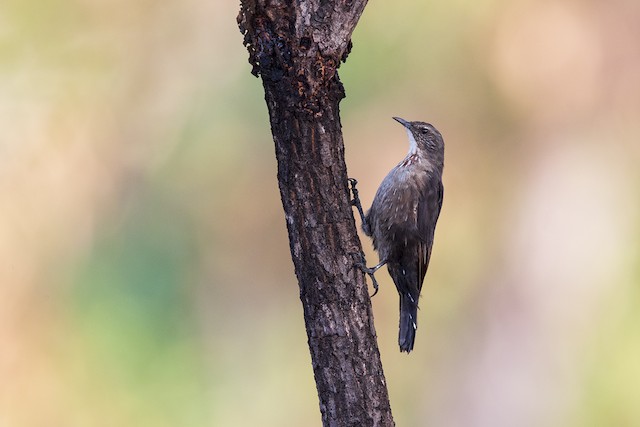Black-tailed treecreepers (Climacteris melanurus) are endemic to north and northwestern Australia. It belongs to the family Climacteridae. Black-tailed treecreepers have pale wing stripes that contrast with their near-black plumage in flight. It occupies permanent territories in eucalypt woodlands and open forests, replacing the Brown Treecreeper.
It spends up to half its foraging time on the ground and on fallen timber, like the Brown Treecreeper. The bird hops along in loose groups of two to six, picking up mostly ants and bobbing its tail. As with other treecreepers, it also works over trees’ trunks and lower branches.
A sharp piping whistle is used by feeding groups to communicate, often dueting simultaneously and antiphonally. As part of the breeding process, helpers are needed to assist with nest building and feeding the young. Treecreepers of this species are also called allied treecreepers or chestnut-bellied treecreepers.

The size of the black-tailed treecreeper is about 160–170 mm in length. Males have plain dusky upperparts with faint white streaks on their ear coverts. There is a pale buff band across the flight feathers of the wings. Tails are dusky with a blacker subterminal band.
The throat and upper breast are black, streaked white; the rest of the underparts are brown-dusky, with black shaft streaks, washed rufous in Pilbara, Western Australia; and the undertail is blacker, barred white. Bill and his feet are black, along with his brown eyes. It has a lighter back and washed underparts and is isolated in Pilbara, Western Australia. There is rufous-and-white striping on the female’s upper breast, ringing her throat. In immature birds, the chin is white-edged with black, and the body is uniformly dusky black.
In contact, the black-tailed treecreeper makes a strident, piping-whistled call. After the first surge, the black-tailed treecreeper sings the same notes erratically, often higher-pitched and descending a little. The breeding and nesting seasons last from September to January. Birds build cup-shaped nests of grass and bark lined with fur and feathers in hollow limbs or trunks.
There are about two to three flesh-white eggs, almost obscured by red-brown and purple-red spots and blotches; they are oval, about 24 x 19 mm. In northwestern continental Australia, black-tailed treecreepers are found in eucalypt woodlands and open forests between Kimberley, Western Australia, and the Gulf of Carpentaria, Queensland. A rufous isolate is found in Pilbara, Western Australia.
